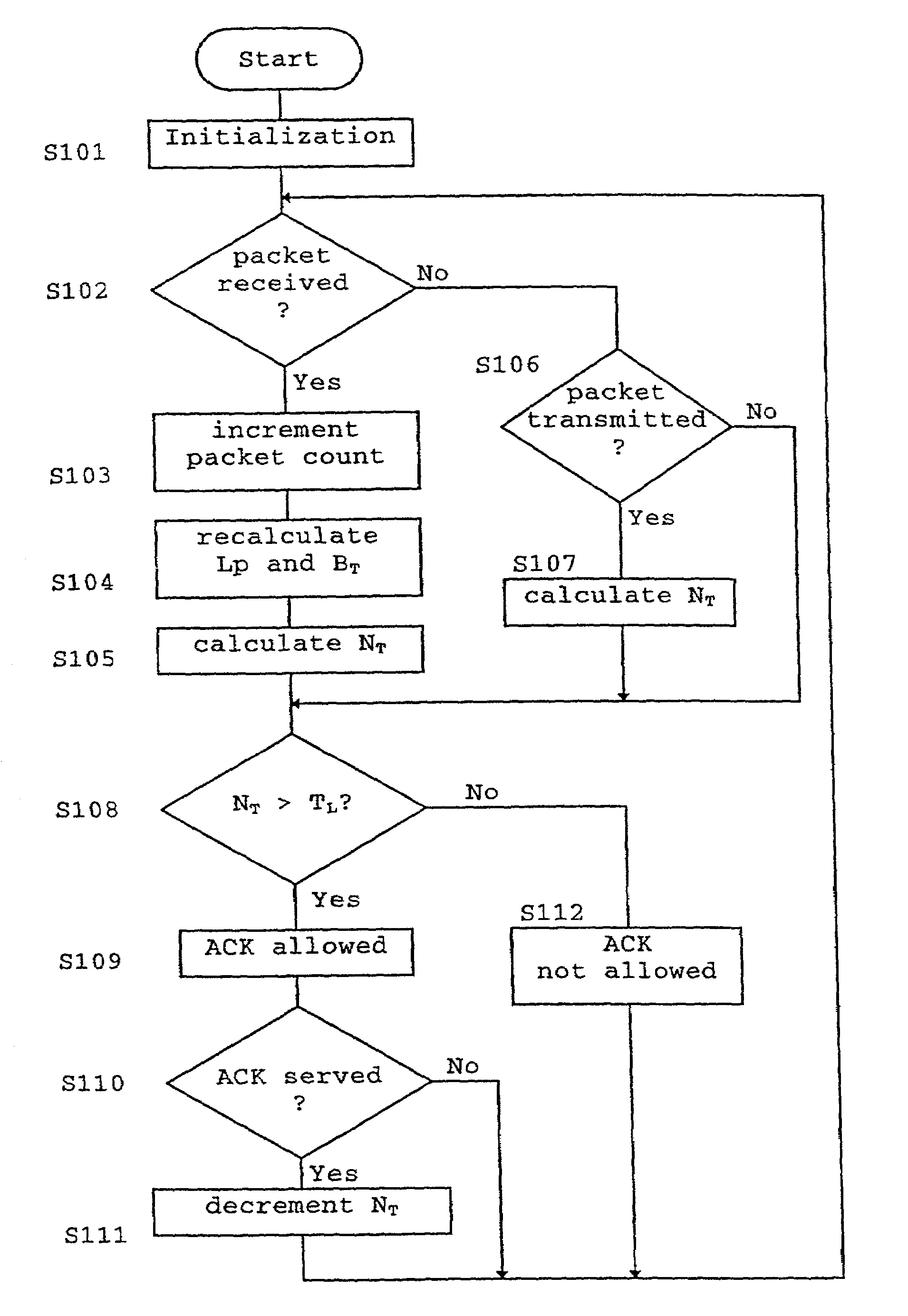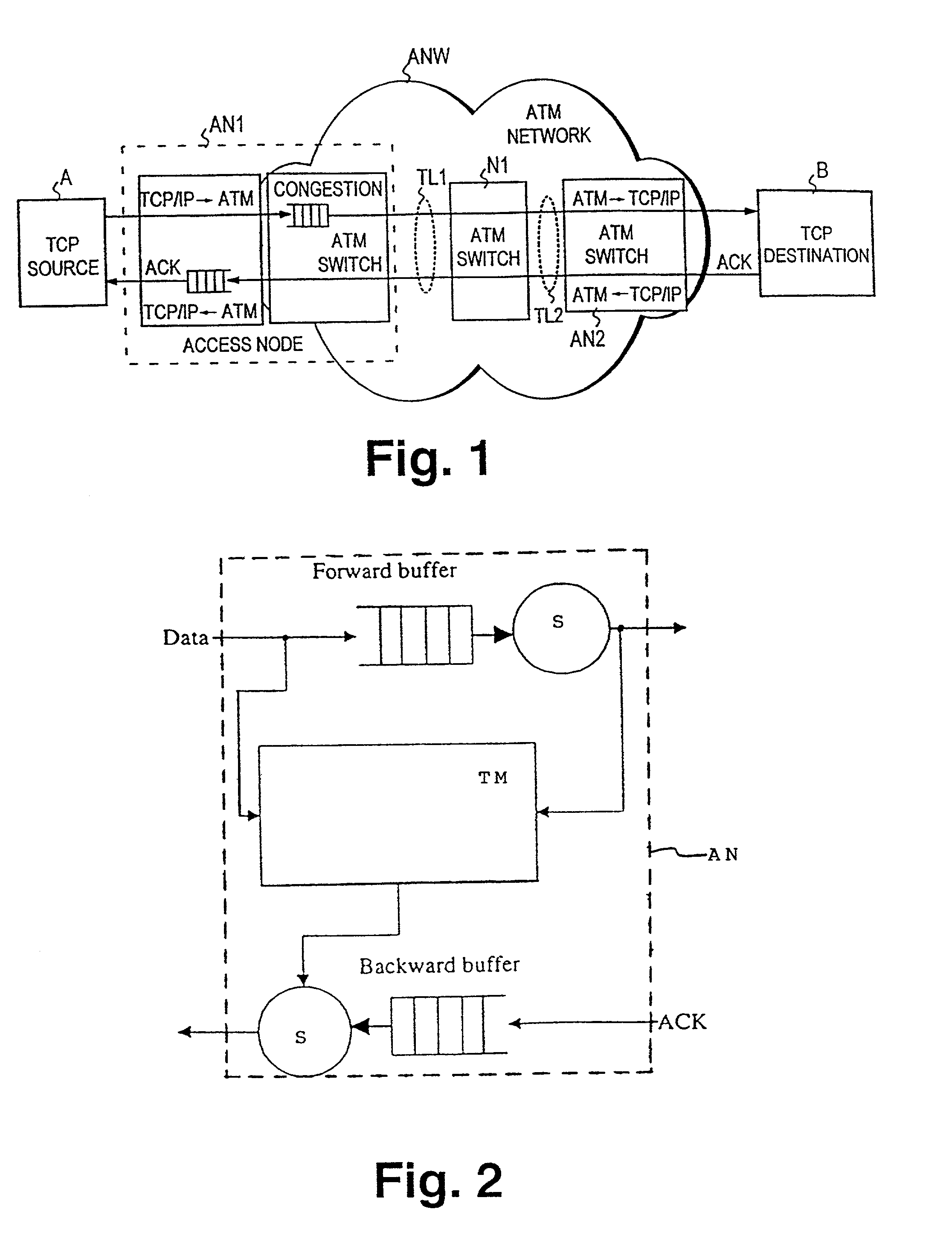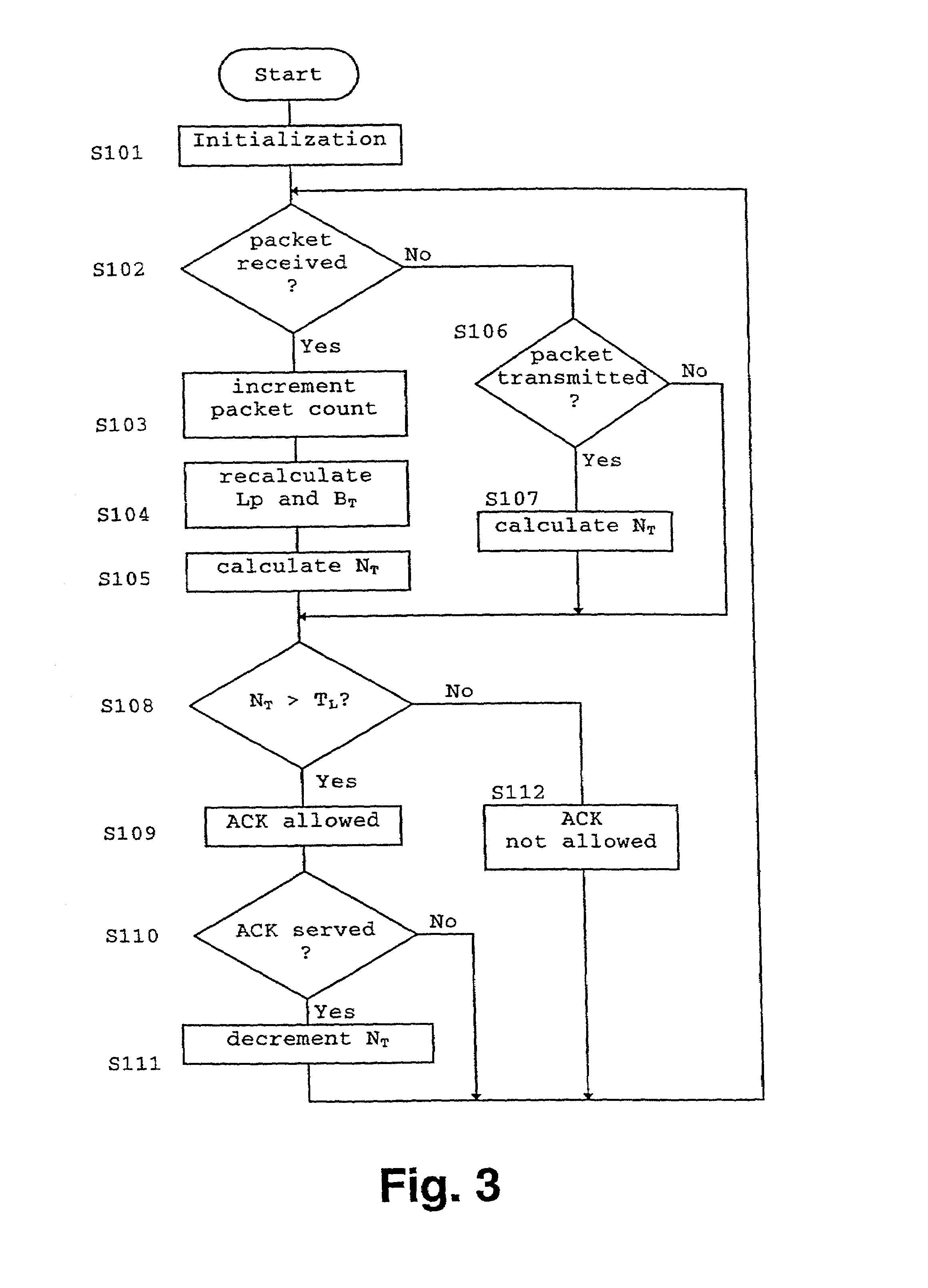Overload control method for a packet-switched network
- Summary
- Abstract
- Description
- Claims
- Application Information
AI Technical Summary
Benefits of technology
Problems solved by technology
Method used
Image
Examples
Embodiment Construction
[0029]In the following, the preferred embodiment of the present invention will be described on the basis of a TCP over ATM network as shown in FIG. 1.
[0030]According to FIG. 1, a connection between two user terminals A and B in a TCP over ATM network is shown, i.e. the user terminals using TCP as a transport layer protocol. In addition two access nodes AN1 and AN2 of the user terminals, one intermediate node N1 and transmission lines TL1, TL2 connecting the nodes are shown.
[0031]The TCP connection between the user terminals A and B starts with a negotiation between the user terminals A and B to open the connection. This initial negotiation is called a three-way handshake, as three opening segments are transmitted during this handshake phase. The term “segment” refers to the unit of information passed by TCP to IP (Internet Protocol). IP headers are attached to these TCP segments to form IP datagrams, i.e. TCP segments are transferred to the receiver within IP datagrams as the inform...
PUM
 Login to View More
Login to View More Abstract
Description
Claims
Application Information
 Login to View More
Login to View More - R&D
- Intellectual Property
- Life Sciences
- Materials
- Tech Scout
- Unparalleled Data Quality
- Higher Quality Content
- 60% Fewer Hallucinations
Browse by: Latest US Patents, China's latest patents, Technical Efficacy Thesaurus, Application Domain, Technology Topic, Popular Technical Reports.
© 2025 PatSnap. All rights reserved.Legal|Privacy policy|Modern Slavery Act Transparency Statement|Sitemap|About US| Contact US: help@patsnap.com



